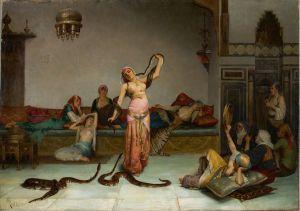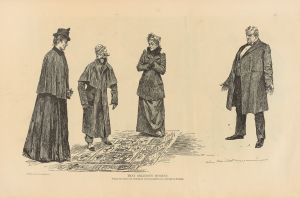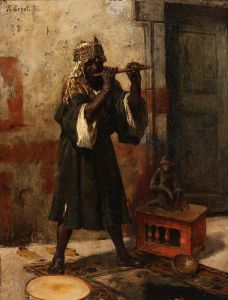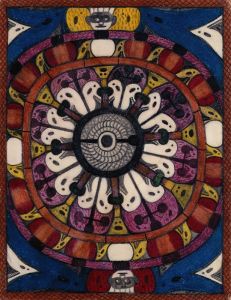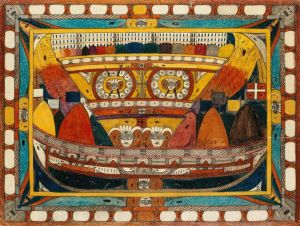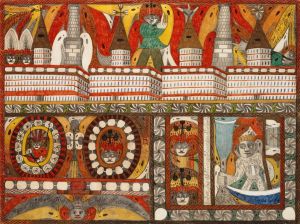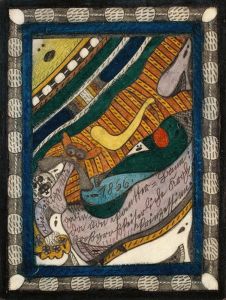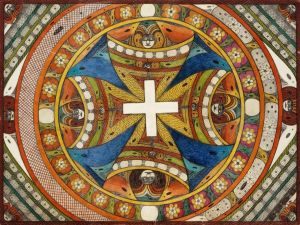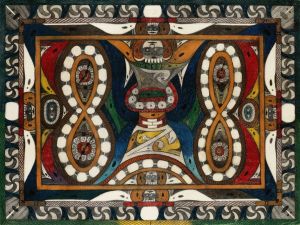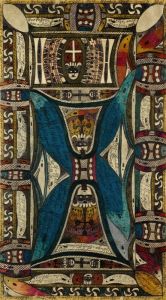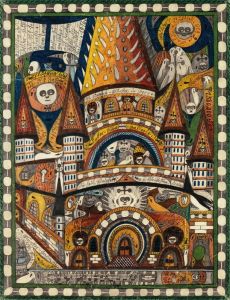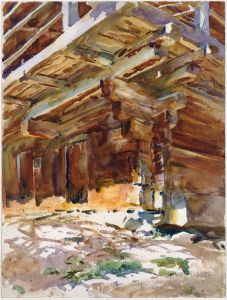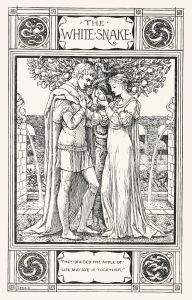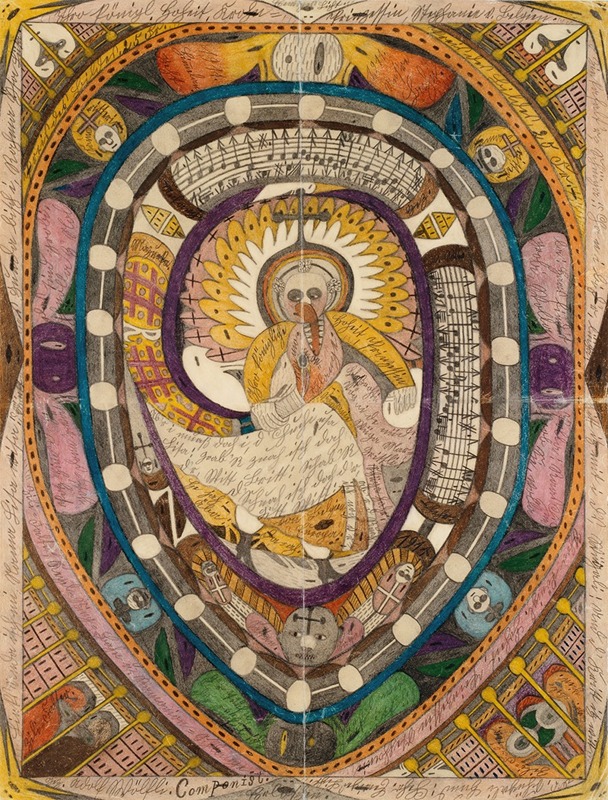
Ihro königliche Hoheit, Prinzessin Stephanie von Belgien, Europa und Ramonion=Schlange
A hand-painted replica of Adolf Wölfli’s masterpiece Ihro königliche Hoheit, Prinzessin Stephanie von Belgien, Europa und Ramonion=Schlange, meticulously crafted by professional artists to capture the true essence of the original. Each piece is created with museum-quality canvas and rare mineral pigments, carefully painted by experienced artists with delicate brushstrokes and rich, layered colors to perfectly recreate the texture of the original artwork. Unlike machine-printed reproductions, this hand-painted version brings the painting to life, infused with the artist’s emotions and skill in every stroke. Whether for personal collection or home decoration, it instantly elevates the artistic atmosphere of any space.
Adolf Wölfli (1864-1930) was a Swiss artist known for his intricate and highly detailed works, often created during his time as a patient at the Waldau Clinic, a psychiatric hospital in Bern. Wölfli's art is a significant example of what is now referred to as "Outsider Art" or "Art Brut," a term coined by French artist Jean Dubuffet to describe art created outside the boundaries of official culture, particularly by psychiatric patients.
One of Wölfli's notable works is "Ihro königliche Hoheit, Prinzessin Stephanie von Belgien, Europa und Ramonion=Schlange" (Her Royal Highness, Princess Stephanie of Belgium, Europe and Ramonion=Snake). This piece, like many of Wölfli's creations, is characterized by its dense, complex compositions and a mixture of text and imagery. Wölfli's works often include fantastical elements and elaborate narratives, reflecting his inner world and the stories he created to make sense of his experiences.
The title of the piece references Princess Stéphanie of Belgium (1864-1945), who was a notable historical figure. She was the daughter of King Leopold II of Belgium and became the Crown Princess of Austria through her marriage to Crown Prince Rudolf. The inclusion of her name in Wölfli's work suggests a connection to European royalty and history, which Wölfli often incorporated into his elaborate mythologies.
Wölfli's artistic process was meticulous and labor-intensive. He used simple materials such as pencils, colored pencils, and paper, creating works that were both visually and textually dense. His compositions often included musical notation, maps, and elaborate patterns, blending reality with his imaginative visions. The presence of the "Ramonion=Schlange" (Ramonion=Snake) in the title adds a layer of symbolic meaning, as snakes often represent transformation, danger, or protection in various cultural contexts.
Wölfli's art was largely unrecognized during his lifetime, but it gained significant attention posthumously. His work was discovered by the art world through the efforts of psychiatrist Walter Morgenthaler, who published a monograph on Wölfli titled "Ein Geisteskranker als Künstler" (A Psychiatric Patient as Artist) in 1921. Morgenthaler's book brought Wölfli's art to the attention of a broader audience and highlighted the creative potential of individuals with mental illnesses.
Today, Adolf Wölfli is considered a pioneer of Outsider Art, and his works are held in high regard by art historians and collectors. His pieces are part of major collections, including the Adolf Wölfli Foundation at the Museum of Fine Arts in Bern, Switzerland. Wölfli's legacy continues to influence contemporary artists and challenges conventional notions of creativity and artistic expression.





